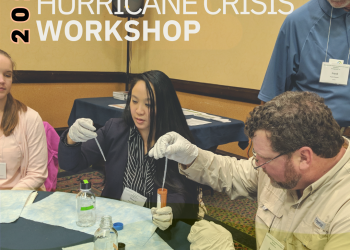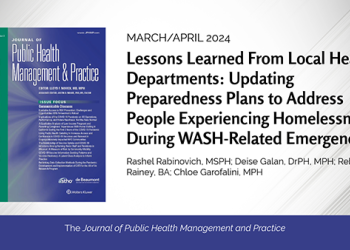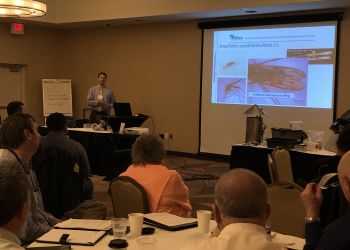Note: This is the seventh edition of NACCHO’s Greener Guidance environmental health advice column. See past columns here. Submit a question here.
February 2019
Dear Greener Guidance,
I am writing to inquire about environmental health (EH) emergency preparedness best practices, specifically with the integration of EH with public health, emergency medical services, and behavioral health in response to disasters that require transportation, shelter, and mass care of impacted populations. Are there plans and models of these divisions planning, training and responding as a coordinated task force or team?
– K from California
Dear K,
NACCHO’s Public Health Preparedness Team recommends reviewing these examples of environmental health preparedness and response plans housed in NACCHO’s Toolbox:
- Kent County Health Department (MI)
- Salt Lake County Health Department (UT)
- Broome County Health Department (NY)
(A free MyNACCHO account is required to download these documents. Create an account here.)
We also spoke with a public health emergency preparedness coordinator at Broome County Health Department, Michael E. Bender, for more information on how Broome County integrates environmental health into emergency preparedness.
Here is Mr. Bender’s advice:
As a Public Health Emergency Preparedness (PHEP) Coordinator it is my responsibility to prepare for emergency responses for all health department divisions. My environmental health (EH) division plays a significant role in many of our health department responses. I have a Public Health Emergency Preparedness Response plan which includes a framework of how we will respond to different types of emergencies. EH is involved with plan updates to ensure they know their role and that it accurately portrays their response during an emergency. We frequently exercise components of this plan and include environmental health staff during these exercises. During all responses and exercises we utilize the Incident Command System (ICS) as the structure to organize our response.
Another invaluable resource for the EH response is the relationships that are established during coalition meetings. These include the Local Emergency Planning Committees (LEPC) and the Healthcare Emergency Preparedness Coalitions (HEPC). These meetings allow information to be shared between organizations and will frequently result in agencies participating in each other’s exercises and trainings. This collaboration improves the cooperation and response capabilities of all of the organizations involved.
In 2011, we experienced a catastrophic flood which displaced many residents in our county. In my county the agency that is primarily responsible for sheltering operations is the American Red Cross. The demographics of this specific event affected many individuals with access and functional needs. Those needs exceeded the capability of the American Red Cross shelter staff They then reached out to the health department to assist with those individuals. The health department collaborated with our local university, local hospitals, nurse staffing companies, Emergency Medical Services, Medical Reserve Corps and many others to respond and support sheltering operations during this event. By utilizing the established relationships and being organized under the ICS structure we were able to meet the needs of our population during this emergency. Environmental Health played many roles during the flood response. They were involved in ensuring the shelter sites were safe and inspected food establishments that were affected. They also addressed issues with drinking water, septic, and health hazards in the home. In my county if there is a public health issue that someone doesn’t know who should be assigned, it ends up with Environmental Health. This was even more true during the floods.
By having plans and exercising them regularly, establishing relationships, and utilizing an organized response structure with ICS your agency will be poised to respond for the next emergency.
Explore NACCHO’s Toolbox for other useful tools and resources, such as this operational tool focused on the local role in the recovery process. NACCHO’s Administrative Preparedness Toolkit (found in the Toolkits dropdown) may also be of interest.
Lastly, if you or any of your colleagues are attending NACCHO’s upcoming Preparedness Summit on March 26-29 in St. Louis, that will be a prime opportunity to network with and learn from other health departments working on these same issues. Learn more about the Preparedness Summit here, and see the full agenda here.






